In this Article
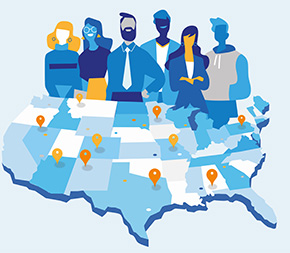

Written and reported by:
Sheila Mickool
Contributing Writer
If you picked up a prescription recently at a drug store, in the pharmacy section of your local grocery store, or at an outpatient facility, there is a good chance a pharmacy technician helped you with your purchase or prepared your medication.
According to the U.S. Bureau of Labor Statistics (BLS), the projected growth in jobs nationally for pharmacy techs through 2032 is 5.6%. While this is right at the national average for all other occupations, pharmacy tech jobs will nonetheless be in demand: an average of more than 25,000 job openings are expected to be generated each year during the 10-year period to replace workers that move into different jobs or retire.
In the land of opportunity, however, not all states are created equal—and it pays to know your state. Where you choose to live may very well make a major difference in job availability, growth, or income. For example, when it comes to projected growth over a 10 year period, pharmacy tech jobs in Texas are forecast to increase by 18%, but no increase is projected in Michigan during that same period. And while the median annual wage for a pharmacy tech in both Hawaii and North Dakota is more than $44,000 per year, the cost of living index in Hawaii is 185.6, while North Dakota’s is a more affordable 97.8.
Best States to Work for Pharmacy Technicians
We sorted the data, reviewed the numbers, and did the rankings. These are the 10 best states for pharmacy technicians. They represent the states with the most jobs, the highest median wages, the highest location quotient, and the lowest cost of living.
#1 Texas
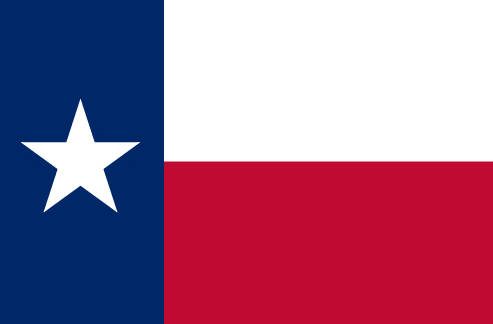
- Median salary: $41,990
- Cost of living index: 92.6
- Employment: 38,960
- Location quotient (density of jobs): .95
- Forecast for growth (2018-2028): 18%
State highlights: The Lone Star State ranks first in employment and boasts one of the highest projected 10-year growth rates. Add rankings in the top 20 for both median wage and the cost-of-living index, and Texas is clearly one of the best states for pharmacy technicians. It is also one of the few states that requires that pharmacy technician candidates obtain certification before registering with the state Board of Pharmacy.
#2 Illinois
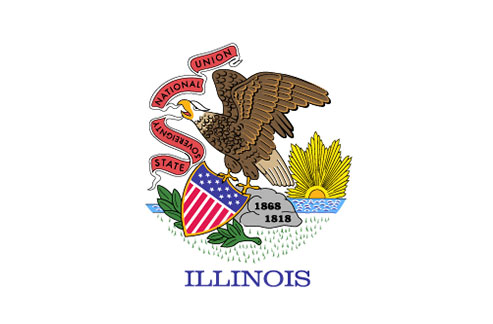
- Median salary: $39,940
- Cost of living index: 90.5
- Employment: 22,950
- Location quotient (density of jobs): 1.26
- Forecast for growth (2018-2028): 2%
State highlights: Illinois ranks in the top 10 in three categories: Employment, location quotient, and cost of living—making it the second best state for pharmacy technicians. And the state has a reputation for progress: the city of Aurora was the first in the country to use electric street lights throughout; and Twinkies were invented here.
#3 Tennessee

- Median salary: $37,380
- Cost of living index: 90.0
- Employment: 12,250
- Location quotient (density of jobs): 1.27
- Forecast for growth (2018-2028): 4%
State highlights: This state’s low cost of living, coupled with its high job density, makes Tennessee a strong contender as a top state for pharmacy technicians. Residents are rightly proud of the state’s musical heritage (Elvis’ Graceland is located here) and its ingenuity (birthplace of the tow truck!).
#4 Michigan
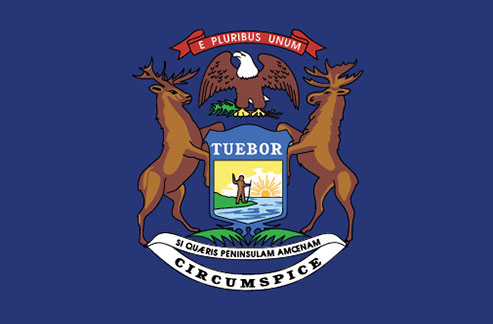
- Median salary: $39,210
- Cost of living index: 91.4
- Employment: 14,190
- Location quotient (density of jobs): 1.08
- Forecast for growth (2018-2028): 0%
State highlights: Although the employment base is not projected to expand over the 10-year period, job opportunities will still exist because of projected turnover. Ranking in the top 10 for both employment and location quotient makes this state a solid fourth place winner. If you love the outdoors, Michigan is a great place to live. Known for fishing, hunting, and thousands of miles of shoreline, there’s lots to do when you’re not at the pharmacy.
#5 Indiana
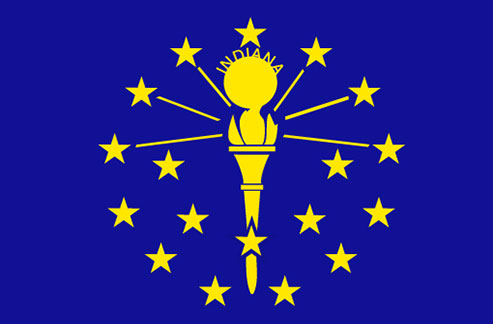
- Median salary: $38,690
- Cost of living index: 91.1
- Employment: 10,490
- Location quotient (density of jobs): 1.10
- Forecast for growth (2018-2028): 6%
State highlights: Small in geographic size, but large in stature and impact, the Hoosier state ranks in the top 15 in employment, location quotient, and cost of living. Popcorn salesman Orville Redenbacher and actor James Dean hail from here, and the Indy 500 was launched at Indiana’s state capitol in 1911.
#6 Florida
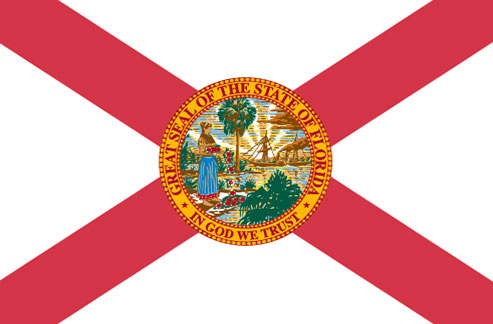
- Median salary: $38,560
- Cost of living index: 101.5
- Employment: 37,980
- Location quotient (density of jobs): 1.31
- Forecast for growth (2018-2028): 9%
State highlights: Florida is known for its oranges, beaches, theme parks—and its retirees. Lots of retirees. So it will be no surprise to learn that Florida ranks third overall in pharmacy tech employment—or that the state’s job density ranks in the top 10, making Florida a top state for pharmacy technicians.
#7 Missouri

- Median salary: $37,300
- Cost of living index: 91.2
- Employment: 10,110
- Location quotient (density of jobs): 1.16
- Forecast for growth (2018-2028): 9%
State highlights: At 1.16, Missouri boasts a high job location quotient in the rankings, and its cost-of-living index is lower than in many states, making it one of the most affordable states on the list. Missouri’s nickname is the “Cave State.” In your spare time, you can explore one of its thousands of caves, and treat yourself to an ice cream cone or ice tea; both invented at the World’s Fair in St. Louis in 1912.
#8 Kansas
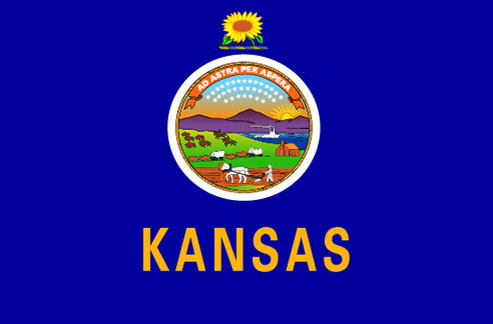
- Median salary: $37,960
- Cost of living index: 86.9
- Employment: 4,260
- Location quotient (density of jobs): 1.00
- Forecast for growth (2018-2028): 3%
State highlights: The most affordable state for pharmacy technicians in the ranking, Kansas also has a high location quotient. It’s a fascinating state that many find intriguing. It was Dorothy’s home in the novel The Wonderful Wizard of Oz and the childhood home of President Dwight D. Eisenhower. Smith County is the geographical center of the lower 48 contiguous U.S. states.
#9 Louisiana

- Median salary: $37,670
- Cost of living index: 92.8
- Employment: 5,850
- Location quotient (density of jobs): 1.04
- Forecast for growth (2018-2028): 11%
State highlights: Ranking at the mid-point or above in all categories, Louisiana comes in ninth. Many are drawn to the state’s unique history and culture: it was named after Louis XIV, has parishes instead of counties, and was acquired from France through the Louisiana Purchase.
#10 Alabama
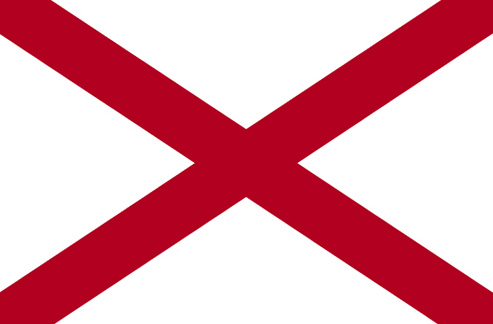
- Median salary: $36,190
- Cost of living index: 88.6
- Employment: 8,340
- Location quotient (density of jobs): 1.34
- Forecast for growth (2018-2028): 7%
State highlights: Alabama has one of the lowest cost-of-living indexes–ranking fourth in the category–but it only takes the 10th spot because it ranks 48th in median wage. Interesting state facts: Alabama was the first state in the nation to recognize Christmas as a holiday and the first to build a rocket to put astronauts on the moon (build at NASA’s space center in Huntsville).
How Do the Rest Rank? States 11-50
| State | Median Salary | Employment | Location Quotient (density of jobs) |
|---|---|---|---|
| #11 Arizona | $36,800 | 9,250 | 1.09 |
| #12 Kentucky | $29,550 | 10,210 | 1.92 |
| #13 Ohio | $31,020 | 17,090 | 1.11 |
| #14 Nevada | $38,380 | 4,210 | 1.13 |
| #15 Minnesota | $38,890 | 8,050 | 1.00 |
| #16 New Mexico | $35,900 | 2,490 | 1.06 |
| #17 Wisconsin | $35,170 | 8,290 | 1.02 |
| #18 West Virginia | $30,400 | 3,140 | 1.62 |
| #19 North Carolina | $32,800 | 13,710 | 1.07 |
| #20 Pennsylvania | $30,650 | 18,900 | 1.15 |
| #21 Mississippi | $32,070 | 3,580 | 1.11 |
| #22 Rhode Island | $38,720 | 1,770 | 1.34 |
| #23 Arkansas | $29,710 | 4,570 | 1.30 |
| #24 Georgia | $31,000 | 11,290 | 0.88 |
| #25 California | $45,090 | 36,100 | 0.74 |
| #26 Oklahoma | $31,230 | 4,870 | 1.04 |
| #27 South Carolina | $33,550 | 6,470 | 1.08 |
| #28 Washington | $46,460 | 7,740 | 0.81 |
| #29 Idaho | $36,250 | 2,260 | 1.05 |
| #30 Utah | $38,230 | 4,060 | 0.91 |
| #31 Oregon | $43,510 | 5,020 | 0.93 |
| #32 Iowa | $34,110 | 3,890 | 0.89 |
| #33 South Dakota | $35,250 | 1,290 | 1.05 |
| #34 Nebraska | $35,230 | 2,540 | 0.90 |
| #35 Virginia | $34,200 | 9,590 | 0.87 |
| #36 Hawaii | $41,060 | 1,850 | 1.08 |
| #37 New Jersey | $34,310 | 10,400 | 0.92 |
| #38 Colorado | $37,600 | 5,710 | 0.74 |
| #39 Massachusetts | $36,800 | 8,740 | 0.87 |
| #40 Maine | $32,350 | 2,280 | 1.33 |
| #41 Wyoming | $39,000 | 560 | 0.71 |
| #42 North Dakota | $41,420 | 880 | 0.74 |
| #43 New York | $35,050 | 18,970 | 0.73 |
| #44 Maryland | $34,310 | 6,940 | 0.92 |
| #45 Montana | $36,780 | 1,200 | 0.89 |
| #46 New Hampshire | $34,840 | 1,880 | 1.02 |
| #47 Alaska | $45,990 | 610 | 0.70 |
| #48 Delaware | $32,890 | 1,270 | 1.00 |
| #49 Connecticut | $34,400 | 3,780 | 0.82 |
| #50 Vermont | $35,730 | 700 | 0.84 |
About the Job
Working under the supervision of pharmacists, pharmacy technicians dispense medications to customers or health professionals. According to the BLS, they may routinely perform the following tasks:
Duties can vary, depending on the state. In most states, pharmacy technicians can compound or mix some medications. They may also call physicians for prescription refills. Duties also vary by the place of employment. For example, those working in hospitals deal with a wider variety of medications, such as intravenous medication. They may also make rounds to deliver medication to patients. While many get the roles of pharmacist and pharmacy tech confused, the jobs are very different.
The job of pharmacy tech is a good fit for those with strong customer service skills who are detail oriented, listen carefully, and are super comfortable with math. Being well-organized is a big plus. The median pay for this position in 2023 was $40,300, according to the BLS.
Advancing Your Career and Your Salary
Most states regulate pharmacy technicians through state boards of pharmacy and the minimum requirements usually include at least a high school diploma or GED and on-the-job training. However, many states and employers require formal education beyond high school that includes course work in dispensing medications and clinical hands-on training. This can generally be completed in a year or less. Many states and employers also require pharmacy techs to become Certified Pharmacy Technicians (CPhT). Pursuing this additional training could help position you for a better salary and more advanced roles.
In addition to becoming certified, taking courses and earning specialty certificates in areas like handling hazardous drugs or working with billing systems may also improve your chances of employment and advancement.
Top States Ranking Methodology
We started with the four main questions you might ask yourself when thinking about which states are best for pharmacy technicians:
- Where are the jobs?
- How much can I earn?
- What is the cost of living?
- What is the job outlook?
To answer these questions, we pulled data for each state from three sources:
Employment, annual median wage, and location quotient: From the U.S. Bureau of Labor Statistics, Occupational Outlook Handbook, Pharmacy Technicians
Cost of living index: From the Missouri Economic Research and Information Center’s (MERIC) Cost of Living Data Series
10-year job growth percentage of change: From the U.S. Department of Labor’s Projections Central site for state employment projections, recommended by the BLS for state employment projections
To determine the rank of each state:
- We loaded employment, annual median wage, location quotient, and cost of living index data for each state
- We ranked each data element in relation to all states
- We totaled the rankings for each state
- In the event of ties in ranking, we used the 10-year job growth percentage-of-change as a tie breaker
Definition of the data elements:
Employment: The current number of pharmacy technician jobs in each state
Annual median wage: The mid-point for annual earnings of all pharmacy technicians; half earn below this midpoint and half earn above the midpoint
Location quotient: The ratio of pharmacy tech employment in a state compared to the national average concentration. A location quotient greater than one indicates that pharmacy technicians in the state have a higher share of employment concentration than the national average, and a location quotient less than one indicates the occupation is less prevalent in the state than it is nationally.
Cost of living index: Derived by averaging costs in each state for living expenses, including housing, groceries, transportation, and health. One hundred is the national average. Because they are more affordable compared to the national average, states with an index below 100 are ranked higher than those with an index above 100 (which are more costly than the national average).
10-year job growth percentage: Indicates the projected percentage of growth over a 10-year period. This data element is used in reporting and as a tie-breaker for rankings.
You may also enjoy:


